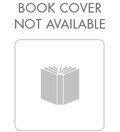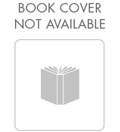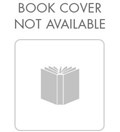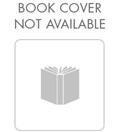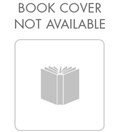Narrow Results By
Blood memory : the tragic decline and improbable resurrection of the American Buffalo
https://archives.whyte.org/en/permalink/catalogue26204
- Medium
- Library - Book (including soft-cover and pamphlets)
- Published Date
- 2023
- Author
- Duncan, Dayton and Burns, Ken
- Publisher
- New York : Alfred A. Knopf
- Call Number
- 08 D91b
- Publisher
- New York : Alfred A. Knopf
- Published Date
- 2023
- Physical Description
- xvi, 329 pages : illustrations (chiefly color) ; 24 cm
- Subjects
- Buffalo
- Pablo-Allard buffalo round-up
- Conservation
- Indigenous
- Colonialism
- Environment
- Ecology
- Abstract
- The epic story of the buffalo in America, from prehistoric times to today--a moving and beautifully illustrated work of natural history. The American buffalo--our nation's official mammal-is an improbable, shaggy beast that has found itself at the center of many of our most mythic and sometimes heartbreaking tales. The largest land animals in the Western Hemisphere, they are survivors of a mass extinction that erased ancient species that were even larger. For nearly 10,000 years, they evolved alongside Native people who weaved them into every aspect of daily life; relied on them for food, clothing, and shelter; and revered them as equals. Newcomers to the continent found the buffalo fascinating at first, but in time they came to consider them a hindrance to a young nation's expansion. And in the space of only a decade they were slaughtered by the millions for their hides, with their carcasses left to rot on the prairies. Then, teetering on the brink of disappearing from the face of the earth, they would be rescued by a motley collection of Americans, each of them driven by different--and sometimes competing--impulses. This is the rich and complicated story of a young republic's heedless rush to conquer a continent, but also of the dawn of the conservation era--a story of America at its very best and worst -- Provided by publisher.
- Contents
- Part 1: The Trail to Extinction -- The Buffalo and the People -- Strangers -- Omen in the Skies -- The Iron Horse -- Kills Tomorrow -- Part 2: Back From the Brink -- A Death Wind for My People -- Just in the Nick of Time -- Changes of Heart -- Ghosts -- The Last Refuge -- Blood Memory -- Big Medicine.
- Notes
- Dayton Duncan ; based on a documentary film by Ken Burns ; written by Dayton Duncan ; with an introduction by Ken Burns ; picture research by Emily Mosher and Susan Shumaker ; design by Maggie Hinders.
- Whyte Museum archival collections utilized.
- ISBN
- 9780593537343
- Accession Number
- P2023.25
- Call Number
- 08 D91b
- Collection
- Archives Library
This material is presented as originally created; it may contain outdated cultural descriptions and
potentially offensive content.
Read more.
Echo loba, loba echo : of wisdom, wolves and women
https://archives.whyte.org/en/permalink/catalogue26217
- Medium
- Library - Book (including soft-cover and pamphlets)
- Published Date
- 2023
- Author
- Swift, Sonja
- Publisher
- Victoria, BC : Rocky Mountain Books
- Call Number
- 04 S5e
- Author
- Swift, Sonja
- Responsibility
- Foreword by Winona LaDuke
- Publisher
- Victoria, BC : Rocky Mountain Books
- Published Date
- 2023
- Physical Description
- 248 pages ; 20 cm
- Subjects
- Wolves
- Wildlife
- Conservation
- Women
- Abstract
- A unique look at the cultural, environmental, historical, literary, metaphorical, and political role of the wolf. Echo Loba, Loba Echo is a story about the metaphor of the wolf and how this is echoed in the lives and minds of people. A metaphor that embodies worldviews colliding, and the collision, the fallout, we live with still. It is a story about wolves’ own cultures, survival stories, acts of rebellion, and vital roles in maintaining healthy territories. And it is also a story about what we have been told to forget, or never even know, and what wolves show us about ourselves. Through essay and poetry, the metaphor of the wolf, and loba – for she-wolf – is examined the way one might observe the light off a prism, in multi-dimensional ways. The associations are many and diametrically varied. Wolf as scapegoat, villain, outcast, blamed for human violence. Wolf as warrior, guide, mother to stray or orphaned children as well as her own pups. The Ojibwe word for wolf is ma’iingan: the one sent here by that all-loving spirit to show us the way. Wolf (Latin: lupus), which is another word for whore (lupa), for woman. Wolf, another word for backcountry. Yet the choice is not an easy duality, not simply between the notion of wolf as heroine or wolf as devil. -- From publisher
- ISBN
- 9781771606288
- Accession Number
- P2024.01
- Call Number
- 04 S5e
- Collection
- Archives Library
This material is presented as originally created; it may contain outdated cultural descriptions and
potentially offensive content.
Read more.
Hope matters : why changing the way we think is critical to solving the environmental crisis
https://archives.whyte.org/en/permalink/catalogue25274
- Medium
- Library - Book (including soft-cover and pamphlets)
- Published Date
- 2020
- Author
- Kelsey, Elin
- Publisher
- Vancouver ; Berkeley : Greystone Books
- Call Number
- 04 K27h
1 website
- Author
- Kelsey, Elin
- Responsibility
- Elin Kelsey
- Publisher
- Vancouver ; Berkeley : Greystone Books
- Published Date
- 2020
- Physical Description
- 229 pages
- Subjects
- Environment
- Conservation
- Climate change
- Abstract
- We are at an inflection point: today, more people than ever before recognize that climate change and biodiversity loss are urgent and existential threats. Yet constant reports of climate doom are fueling an epidemic of eco-anxiety, leaving many of us feeling hopeless and powerless—and hampering our ability to address the very real challenges we face. Hope Matters boldly breaks through the narrative of doom and gloom that has overtaken conversations about our future to show why hope, not fear, is our most powerful tool for tackling the planetary crisis. Award-winning author, scholar, and educator Elin Kelsey reveals the collateral damage of despair—from young people who honestly believe they have no future to the link between climate anxiety and hyper-consumerism—and argues that the catastrophic environmental news that dominates the media tells only part of the story. She describes effective campaigns to support ocean conservation, species resilience, and rewilding, demonstrating how digital conservation is helping scientists target specific problems with impressive results. And she shows how we can build on these positive trends and harness all our emotions about the changing environment—anger and sadness as well as hope—into effective personal and political action. Timely, evidence-based, and persuasive, Hope Matters is an argument for the place of hope in our lives and a celebration of the turn toward solutions in the face of the environmental crisis. (from publisher's website)
- Contents
- The power of expectation and belief -- The collateral damage of doom and gloom -- Hope is contagious -- Stories change -- The age of personalization -- We are not the only ones actively responding -- The strength of empathy, kindness, and compassion -- Trending hopeful.
- Notes
- Published in Partnership with the David Suzuki Institute.
- ISBN
- 9781771647779
- Accession Number
- P2020.07
- Call Number
- 04 K27h
- Collection
- Archives Library
- URL Notes
- Publisher's website
Websites
This material is presented as originally created; it may contain outdated cultural descriptions and
potentially offensive content.
Read more.
Organizing nature : turning Canada's ecosystems into resources
https://archives.whyte.org/en/permalink/catalogue26201
- Medium
- Library - Book (including soft-cover and pamphlets)
- Published Date
- 2023
- Author
- Biro, Andrew and Cohen, Alice
- Publisher
- Toronto ; Buffalo ; London : University of Toronto Press
- Call Number
- 04 B53o
- Publisher
- Toronto ; Buffalo ; London : University of Toronto Press
- Published Date
- 2023
- Physical Description
- xviii, 264 pages : illustrations, maps ; 24 cm
- Abstract
- Organizing Nature explores how the environment is organized in Canada's resource-dependent economy. The book examines how particular ecosystem components come to be understood as natural resources and how these resources in turn are used to organize life in Canada. In tracing transitions from "ecosystem component" to "resource," this book weaves together the roles that commodification, Indigenous dispossession, and especially a false nature-society binary play in facilitating the conceptual and material construction of resources. Alice Cohen and Andrew Biro present an alternative to this false nature-society binary: one that sees Canadians and their environments in a constant process of making and remaking each other. Through a series of case studies focused on specific resources--fish, forests, carbon, water, land, and life--the book explores six channels through which this remaking occurs: governments, communities, built environments, culture and ideas, economies, and bodies and identities. Ultimately, Organizing Nature encourages readers to think critically about what is at stake when Canadians (re)produce myths about the false separation between Canadian peoples and their environments."-- Provided by publisher.
- Contents
- 1. Introduction -- 1.1 From How to Why -- 1.2 From Ecosystem Components to Resources -- 1.3 Politics beyond Policy -- 1.4 Resourcification through Six Channels -- 1.5 Book Outline and Common Themes -- 2. Channels: From Ecosystem Components to Resources -- 2.1 Introduction -- 2.2 Governments -- 2.3 Communities -- 2.4 Built Environments -- 2.5 Culture and Ideas -- 2.6 Economies -- 2.7 Bodies and Identities -- 2.8 Summary and Conclusions -- 3. From Fish to Fisheries -- 3.1 Introduction -- 3.2 Salmon in British Columbia -- 3.3 Cod in Newfoundland and Labrador -- 3.4 Channels in Action: Organizing Fisheries -- 3.5 Summary and Conclusions -- 4. From Forests to Timber -- 4.1 Introduction -- 4.2 Growth of Timber: Saint John, New Brunswick -- 4.3 Trees, Not Timber: Port Renfrew, British Columbia, and Darkwoods -- 4.4 Channels in Action: Organizing Forests -- 4.5 Summary and Conclusions -- 5. From Carbon to Energy -- 5.1 Introduction -- 5.2 Coal in Nova Scotia -- 5.3 Oil and Bitumen in Alberta -- 5.4 Natural Gas and Fracking -- 5.5 Channels in Action: Organizing Carbon -- 5.6 Summary and Conclusions -- 6. From H2O to Water -- 6.1 Introduction -- 6.2 Diversions and Damming -- 6.2.1 Diversion -- 6.2.2 Damming -- 6.3 Drinking Water -- 6.3.1 Vancouver, 2006 -- 6.3.2 Walkerton, Ontario, 2000 -- 6.3.3 Asubpeechoseewagong Netum Anishinabek-Grassy Narrows, Ontario, 1962-? -- 6.3.4 Drinking Water: Summary -- 6.4 Channels in Action: Organizing Water -- 6.5 Summary and Conclusions -- 7. From Land to Property -- 7.1 Introduction -- 7.2 Soil -- 7.3 Symbol -- 7.4 Space -- 7.5 Channels in Action: Organizing Land -- 7.6 Summary and Conclusions -- 8. From Bodies to Life -- 8.1 Introduction -- 8.2 Wild(?)life: Non-Human Animals -- 8.2.1 Pets and Other Companion Species -- 8.2.2 Fish and Game: Wildness as Economic Resource -- 8.2.3 Parks as Spaces for Wildlife -- 8.3 Human Resources -- 8.3.1 Blood and Plasma -- 8.3.2 Surrogacy -- 8.4 The Channels in Action: Organizing Life -- 8.5 Summary and Conclusions -- 9. Resources: Organized and Organizers -- 9.1 Channels in Action -- 9.2 Common Themes -- 9.2.1 Commodification -- 9.2.2 Indigenous Dispossession -- 9.2.3 Artificial Nature-Society Binary -- 9.3 Why Does 'Resource Thinking' Matter? -- 9.3.1 Winning and Losing -- 9.3.2 Why Is It Important to Think beyond Policy?
- ISBN
- 9781487594848
- Accession Number
- P2023.22
- Call Number
- 04 B53o
- Collection
- Archives Library
This material is presented as originally created; it may contain outdated cultural descriptions and
potentially offensive content.
Read more.
Return of the bison : a story of survival, restoration, and a wilder world
https://archives.whyte.org/en/permalink/catalogue26218
- Medium
- Library - Book (including soft-cover and pamphlets)
- Published Date
- 2023
- Author
- Di Silvestro, Roger L.
- Publisher
- Seattle, WA : Mountaineers Books
- Call Number
- 04.2 D54r
- Author
- Di Silvestro, Roger L.
- Publisher
- Seattle, WA : Mountaineers Books
- Published Date
- 2023
- Physical Description
- 254 pages : map ; 21 cm
- Subjects
- Bison
- Buffalo
- Conservation
- Environement
- Zoology
- Abstract
- In less than a century, a bison population that once numbered in the millions and stretched across North America was reduced to just a few dozen animals primarily in Yellowstone National Park. DeSilvestro explores one of the greatest conservation comeback stories in American history-- yet its "success" is qualified. Most bison today live in commercial herds, contained like cattle. Are we willing to coexist with them as wild animals who need freedom to roam? -- Excerpt from back cover
- Contents
- In the beginning -- When science favors extinction -- Where buffalo roam, again: early restoration -- American bison step out of the ER -- Private herds : hopes, aspirations, roads to recovery -- Tribes : finding home -- Lost herds : Mexico and Canada -- The way of the wisent -- The last refuge -- Building a future for bison.
- ISBN
- 9781680515831
- Accession Number
- P2024.01
- Call Number
- 04.2 D54r
- Collection
- Archives Library
This material is presented as originally created; it may contain outdated cultural descriptions and
potentially offensive content.
Read more.
Streams of consequence : dispatches from the conservation world
https://archives.whyte.org/en/permalink/catalogue26207
- Medium
- Library - Book (including soft-cover and pamphlets)
- Published Date
- 2023
- Author
- Fitch, Lorne
- Publisher
- Victoria, BC : Rocky Mountain Books
- Call Number
- 04 F55s
- Author
- Fitch, Lorne
- Publisher
- Victoria, BC : Rocky Mountain Books
- Published Date
- 2023
- Physical Description
- 217 pages ; 19 cm
- Abstract
- A collection of essays highlighting the splendour and diversity of the landscape of southern Alberta. Streams of Consequence weaves together a bit of “ecology for dummies,” a cross-section of stories and essays on Alberta’s biodiversity riches and treasured landscapes, and a backdrop of selections on conservation issues. These are stories of the land and of Alberta’s plants, fish, and wildlife told through the voice of a biologist with decades of experience on the front lines of conservation efforts. Through stories, metaphor, and allegory, basic ecological principles are made clear, ecosystems are described, and our human role in stewarding these natural treasures is revealed. Infused in these “dispatches from the conservation world” is the special magic of biology, taking mute organisms at a variety of scales and understanding their lives and habitats so that they have meaning and a connection to us. The role, the unstated objective of biologists, is to remind us, unceasingly, that it is only in our minds that we live apart from the natural world. These stories have power to engage and educate, to help create and sustain an ecologically literate constituency that knows and cares about Alberta’s wilder side. Readers can look back on the changes, weigh their significance, and think about where we came from, where we are today, and where the trend might take us if we choose one road or another. There are some rocks heaved at our economy-centred, consumer-driven world. Scattered between them are the acts of altruism, of caring, of forethought, and of stewardship. These are rays of hope amid dark clouds threatening our very existence. -- From publisher
- ISBN
- 9781771606691
- Accession Number
- P2023.25
- Call Number
- 04 F55s
- Collection
- Archives Library
This material is presented as originally created; it may contain outdated cultural descriptions and
potentially offensive content.
Read more.
Taking a break from saving the world : a conservation activist's journey from burnout to balance
https://archives.whyte.org/en/permalink/catalogue26197
- Medium
- Library - Book (including soft-cover and pamphlets)
- Published Date
- 2020
- Author
- Legault, Stephen
- Publisher
- Calgary, Alberta : Rocky Mountain Books
- Call Number
- 04 L52t
- Author
- Legault, Stephen
- Publisher
- Calgary, Alberta : Rocky Mountain Books
- Published Date
- 2020
- Physical Description
- 166 pages : illustrations ; 18 cm
- Subjects
- Self-Help
- Conservation
- Activism
- Environment
- Abstract
- A veteran of burnout himself, Legault looks at the culture of self-sacrifice that permeates the work done by volunteers and paid staff in the environmental conservation movement, and dissects how to manage our own time, energy, and commitment to our causes. Following a river-running metaphor, and proposing a variety of techniques to help with various states of anxiety resulting from burnout, including clarity of purpose, recognition of limits, fitness and diet, mediation and yoga, as well as organizational structural changes such as leave-of-absence policies, Legault encourages readers to find time to 'eddy out'--to rest a moment in quieter waters and scout downriver--to ensure our lifetime of engagement is fulfilling, effective, and self-sustaining. -- From Backcover
- ISBN
- 9781771603638
- Accession Number
- P2023.25
- Call Number
- 04 L52t
- Collection
- Archives Library
This material is presented as originally created; it may contain outdated cultural descriptions and
potentially offensive content.
Read more.
Transformative politics of nature : overcoming barriers to conservation in Canada
https://archives.whyte.org/en/permalink/catalogue26252
- Medium
- Library - Book (including soft-cover and pamphlets)
- Published Date
- 2023
- Publisher
- Toronto ; Buffalo ; London : University of Toronto Press
- Call Number
- 04 Ol4t
- Responsibility
- Edited by Andrea Olive, Chance Finegan, and Karen F. Beazley
- Publisher
- Toronto ; Buffalo ; London : University of Toronto Press
- Published Date
- 2023
- Physical Description
- x, 310 pages : illustrations (black and white), map ; 23 cm
- Subjects
- Environment
- Environmentalism
- Conservation
- Politics
- Indigenous
- Indigenous Peoples
- Law
- Canada
- Abstract
- Transformative Politics of Nature highlights the most significant barriers to conservation in Canada and discusses strategies to confront and overcome them. Featuring contributions from academics as well as practitioners, the volume brings together the perspectives of both Indigenous and non-Indigenous experts on land and wildlife conservation, in a way that honours and respects all peoples and nature. Contributors provide insights that enhance understanding of key barriers, important actors, and strategies for shaping policy at multiple levels of government across Canada. The chapters engage academics, environmental conservation organizations, and Indigenous communities in dialogues and explorations of the politics of wildlife conservation. They address broad and interrelated themes, organized into three parts: barriers to conservation, transformation through reconciliation, and transformation through policy and governance. Together, they demonstrate and highlight the need for increased social-political awareness of biodiversity and conservation in Canada, enhanced wildlife conservation collaborative networks, and increased scholarly attention to the principle, policies, and practices of maintaining and restoring nature for the benefit of all peoples, other species, and ecologies. Transformative Politics of Nature presents a vision of profound change in the way humans relate to each other and with the natural world. -- Provided by publisher.
- Contents
- OPENING CEREMONY -- Beginning / Shalan Joudry -- PART A: INTRODUCTION -- 1. From politics to transformative politics in Canada / Karen F. Beazley, Andrea Olive, and Chance Finegan -- INTRODUCING DISRUPTIONS / Chance Finegan -- PART B: BARRIERS TO CONSERVATION IN CANADA -- 2. A pathological examination of conservation failure in Canada / Christopher J. Lemieux, Mark W. Groulx, Trevor Swerdfager, and Shannon Hagerman -- 3. Who should govern wildlife? Examining attitudes across the country / Matthew A. Williamson, Stacy Lischka, Andrea Olive, Jeremy Pitman, and Adam T. Ford -- 4. In a rut: barriers to caribou recovery / Julee Boan and Rachel Plotkin -- 5. Enacting a reciprocal ethic of care: (finally) fulfilling treaty obligations / Larry McDermott and Robin Roth -- DISRUPTIONS, PART B -- Disrupting dominant narratives for a mainstream conservation issue: a case study on "saving the bees" / Sheila R. Colla -- The national parks in disrupting heritage interpretation on Turtle Island / Chance Finegan -- PART C: TRANSFORMATION THROUGH VALUES -- 6. Reconciliation or Apiksitaultimik? indigenous relationality for conservation / Sherry Pictou -- 7. "etuaptmumk / two-eyed seeing and reconciliation with Earth" / Deborah McGregor, Jesse Popp, Andrea Reid, Elder Albert Marshall, Jacquelyn Miller, and Mahisha Sritharan -- 8. Beacons of teachings / Lisa Young -- DISRUPTIONS, PART C -- Indigenous knowledge as a disruption to state-led conservation / Natasha Myhal -- The Misipawistik Cree Nation kanawenihcikew guardians program / Heidi Cook -- PART D: TRANSFORMATION THROUGH ACTION -- 9. Transforming university cirriculum and student experiences through collaboration and land-based learning / Melanie Zurba, James Doucette, and Bridget Graham -- 10. Ecological networks and corridors in the context of global initiatives / Jodi A. Hilty and Stephen Woodley -- 11. The imperative for transformative change to address biodiversity loss in Canada / Justina C. Ray -- DISRUPTIONS, PART D. -- Conservation bright spots: focusing on solutions instead reacting to problems / Barbara Frei -- Disrupting current approaches to biodiversity conservation through innovative knowledge mobilization / Vivian Nguyen -- PART E: CONCLUSION -- 12. Achieving transformative change: conservation in Canada, 2023 and beyond / Andrea Olive and Karen F. Beazley -- CLOSING CEREMONY -- Onward / Shalan Joudry
- ISBN
- 9781487550516
- Accession Number
- P2024.02
- Call Number
- 04 Ol4t
- Collection
- Archives Library
This material is presented as originally created; it may contain outdated cultural descriptions and
potentially offensive content.
Read more.


